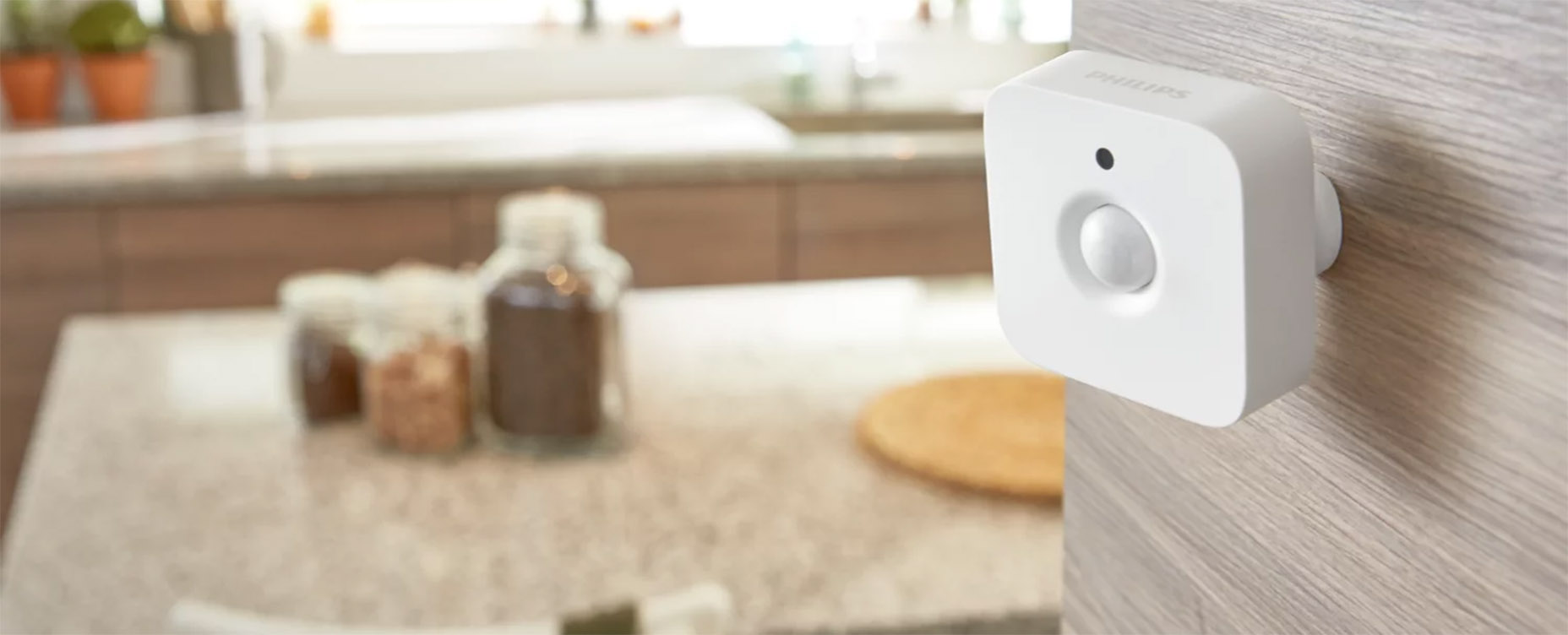When building your smart home, motion sensors are a cornerstone for enhancing security and automating everyday tasks. Whether you’re looking to upgrade home security, save energy, or simply enjoy the convenience of automated lighting and alerts, motion sensors are the perfect addition to your Homey-powered smart home.
Our comprehensive guide delves into the best options for Homey-compatible motion sensors and offers insights on selecting the ideal devices for your needs. We carefully selected every motion sensor on our list based on reliability, capability, additional features, and affordability as key criteria.
How Do You Choose the Right Motion Sensor?
Our team has vetted each device on our list. Some have additional features, vary in shapes and sizes, and have distinct pricing. Here are the top factors to consider when choosing a suitable motion sensor.
Compatibility
Select a compatible motion sensor with your Homey Cloud, Homey Bridge, or Homey Pro smart home platform.
Detection Range and Angle
Motion sensors vary in their detection range and angle capabilities. Some offer wider areas of coverage, and others focus on more narrow, specific zones.
Size and Shape
Motion sensors come in various shapes and sizes to accommodate different installation needs and aesthetic preferences.
Price
Buying several motion sensors can quickly increase costs. Consider the price-to-features ratio highlighted in our article to ensure you get the best value.
| Brand | Model | Protocol | Detection Range/Angle | Price |
|---|---|---|---|---|
| Multisensor 7 |  Z-Wave Z-Wave | 10 m/120° | €74.76 | |
| P2 Motion and Light Sensor |  Thread Thread | 7 m/150° | €33.99 | |
| Motion Sensor |  Thread Thread | 9 m/120° | €49.95 | |
| Motion Sensor |  Z-Wave Z-Wave | 7 m/150° | €49.50 | |
| Motion Sensor Pro |  Zigbee Zigbee | 9 m/45° | €29.95 | |
| Vallhorn Motion Sensor |  Zigbee Zigbee | 10 m/120° | €9.99 | |
| Outdoor Motion Sensor |  433MHz 433MHz | 10 m/110° | €37.47 | |
| Hue Motion Sensor |  Zigbee Zigbee | 5 m/100° | €39.19 | |
| BLU Motion Sensor |  Bluetooth Bluetooth | 9 m/120° | €19.90 | |
| Motion Sensor |  Bluetooth Bluetooth | 9 m/110° | €29.99 | |
| Motion Sensor |  Zigbee Zigbee | 9 m/120° | €20.00 | |
| Q Sensor |  Z-Wave Z-Wave | 6 m/120° | €35.95 |
Aeotec Multisensor 7
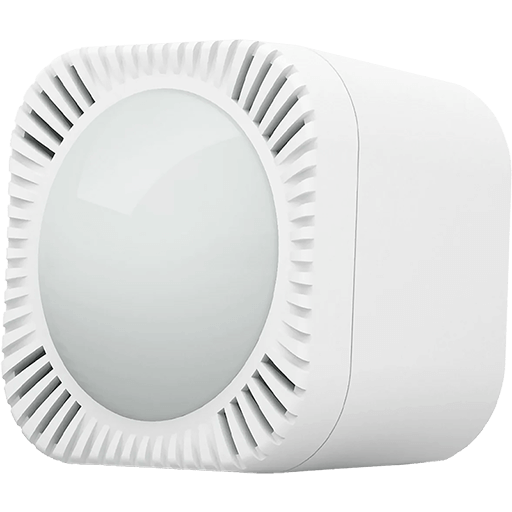
- 6 Additional sensors
- Premium build
- Small and compact
- Power via batteries or USB
- Expensive
The Aeotec Multisensor 7 is a highly versatile smart device with 7 sensors for comprehensive environmental monitoring in modern smart homes. It detects movement of up to 10 meters at an angle of 100 degrees. In addition, the Aeotec Multisensor 7 tracks room temperature, humidity, light levels, and UV index and features vibration detection and anti-tamper mechanisms. It’s like the Swiss Army Knife of smart sensors!
Despite its extensive feature set, the device is surprisingly compact. Measuring just 45 x 45 millimeters, it is easy to conceal out of sight. Additionally, the sensor offers flexible installation options as it can be powered by two CR123A batteries or a USB cable.
Using Z-Wave Plus technology, the Aeotec Multisensor 7 ensures exceptionally reliable and robust communication with your Homey Bridge or Homey Pro. Its outstanding build quality, wide array of sensors, and dependable communication protocol make it our list’s premium and most expensive option.
Aqara P2 Motion Sensor
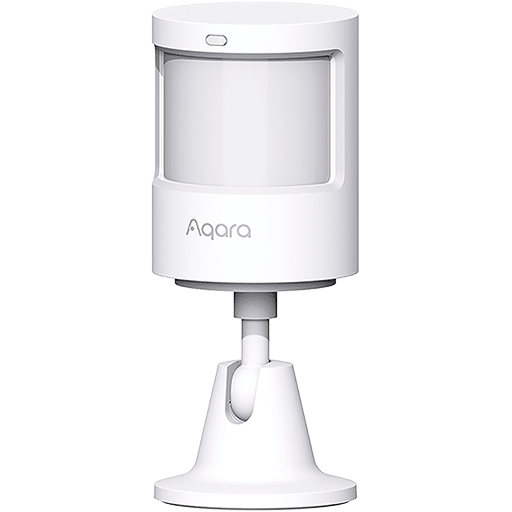
- Extra long battery life
- 360° Rotating stand
- Wide field of view
- Illuminance reading
- Bulky when used with stand
The Aqara P2 Motion Sensor is the latest update to Aqara’s well-known motion sensor line-up. It offers major improvements over its predecessors, including a whopping five years of battery life!
This extended battery longevity is achieved using two CR2430 batteries instead of one, making the P2 larger than Aqara’s first-generation motion sensor. Including the stand, it measures 7 centimeters long—which is definitely a factor you need to consider.
However, the 360-degree rotating swivel makes the P2 highly flexible and versatile, allowing you to install and aim it anywhere. It can detect motion up to 7 meters away within a 150-degree angle, expanding to 170 degrees at closer distances. The P2 has the widest field of view among comparable devices, making it a great pick for quickly activating flow sequences in your Homey.
The Aqara P2 Motion Sensor uses Thread to connect to your Homey Pro, providing motion, battery status, and a light level reading. Matter’s mesh communication protocol, Thread, enables a reliable connection and super-long battery life for end devices.
Eve Motion Sensor
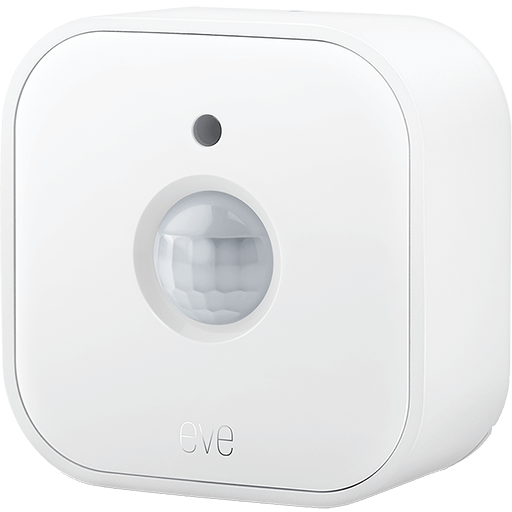
- Matter device
- Common batteries
- Illuminance reading
- Premium build
- Weatherproof (IPX3)
- Costly
- No mounting stand
Eve’s newest motion sensor utilizes the cutting-edge Thread communication protocol for integration via Matter with your Homey Pro. This ensures a smooth and effortless setup process that can be conveniently completed using your smartphone.
The Eve Motion Sensor has an extensive detection range of 9 meters and a wide 120-degree field of view, making it ideal for monitoring even the most spacious rooms in your home. You can also install this sensor outdoors because it has an IPX3 rating, making it waterproof against spraying water or light rain.
This sensor can also measure light levels, with a built-in lux sensor mounted on the front of its square-shaped body. It doesn’t come with a mounting stand, which may be limiting in certain installation positions.
What’s great about the Eve Motion Sensor is that it runs on two AAA batteries, probably the most common battery type in the average household. This high-end premium device uses Thread and is more expensive than most on our list. Costs can stack up if you deploy several sensors.
Fibaro Motion Sensor

- Premium build
- Visual LED indicator
- Wide field of view
- Highly sensitive accelerometer
- Costly
The Fibaro Motion Sensor features a unique, eye-catching design reminiscent of a cat’s eye, whose lens doubles as a multicolor visual LED indicator. This design goes beyond aesthetics since the spherical shape widens the sensor’s field of view, allowing it to detect motion across a 150-degree angle with a maximum reach of 7 meters.
This Z-Wave motion sensor by Fibaro has a highly sensitive accelerometer that detects even the slightest vibrations. Paired with your Homey, it can alert you whenever it senses things moving or shaking nearby, which is very useful for the early detection of earthquakes.
It can also measure temperature and illuminance and use the built-in indicator to visually announce the ambient temperature in different colors. According to the company, the device runs on a single CR123A battery, which should last up to two years, considering Z-Wave is a low-power communication protocol.
Frient Motion Sensor Pro
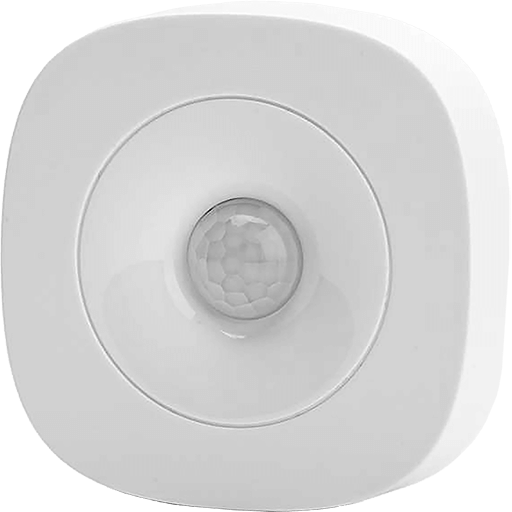
- Very thin
- Temperature sensor
- Illuminance sensor
- Common batteries (AA)
- Wider and taller than most
If you prefer installing Zigbee devices in your smart home, the Frient Motion Sensor Pro is an excellent choice. This model has a temperature and light sensor, enhancing its functionality and usefulness for creating Flows.
With a range of 9 meters, it has one of the largest detection distances on our list. However, it also has one of the most confined fields of view at 45 degrees. In other words, this makes the sensor particularly effective for monitoring motion at entry points, hallways, garage doors, and smaller, more narrow spaces.
The Frient Motion Sensor Pro runs on two AA batteries, which are extremely affordable and available at your nearest convenience store. It ships with a special mounting stand, which allows you to install the sensor in a corner or on a flat surface.
Measuring 70 x 70 millimeters, this motion sensor isn’t the smallest in width and height, but its slim 21 millimeters thickness ensures an attractive and unobtrusive look when wall-mounted.
If you don’t need temperature and illuminance readings, then the Frient Motion Sensor’s non-pro version is identical in shape, size, connectivity, and battery.
IKEA VALLHORN Motion Sensor
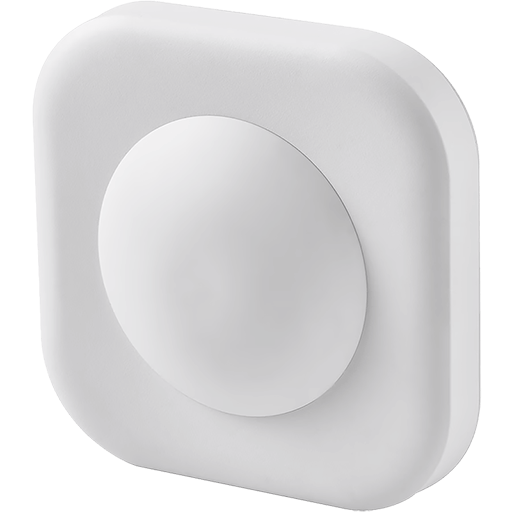
- Very affordable
- Weatherproof (IP44)
- Common batteries (AAA)
- Bulky
The VALLHORN is IKEA’s newest release. It is part of a trio of smart sensors that detect water leaks, monitor doors and windows, and detect motion. The other two are PARASOLL and BADRING, which reflect Scandinavian culture.
The IKEA VALLHORN is a Zigbee sensor that runs on two AAA batteries. It measures 70 millimeters in width and height and 39 millimeters thick, making it the bulkiest square-shaped motion sensor on our list.
With its IP44 water and dust resistance rating, the VALLHORN is suitable for outdoor installation under your porch roof or garage cover. It can withstand water splashes from all directions but not heavy rain.
Unlike others in our selection, this motion sensor lacks temperature and illuminance sensors, making it highly cost-effective and perfectly suited for widespread use within your Homey-powered smart home.
Trust (KlikAanKlikUit) Motion Sensor
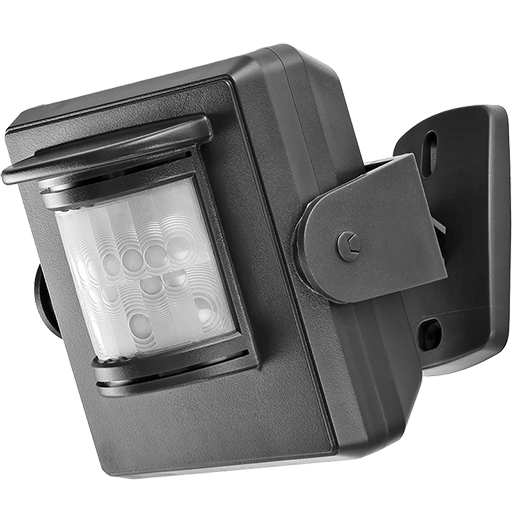
- Wide detection angle
- Long detection range
- Weatherproof (IP64)
- Long-range connectivity
- Unattractive design
If you are looking for a capable outdoor sensor with a long-range connection, then the Trust (KlikAanKlikUit) APIR-2150 Motion Sensor is an excellent pick.
This device relies on 433 MHz to communicate with your Homey Bridge or Homey Pro at a maximum range of 30 meters, enough to cover most yards, driveways, or gardens.
Regarding motion detection capabilities, the APIR-2150 outperforms similar sensors with a wide detection angle of 110 degrees and a very long range of 10 meters at its front and 6 meters on its sides. If installed correctly, you can detect motion in the entire front area of your house.
Powered by two AAA batteries, the Trust APIR-2150 can last years without a battery change. However, this sensor really shines because of its IP64 rating, which makes it capable of withstanding any weather conditions, such as strong winds, dust, rain, or high moisture.
The APIR-2150 is bulkier and pricier than similar sensors, but this is forgivable considering it is a waterproof outdoor motion sensor.
Philips Hue Motion Sensor
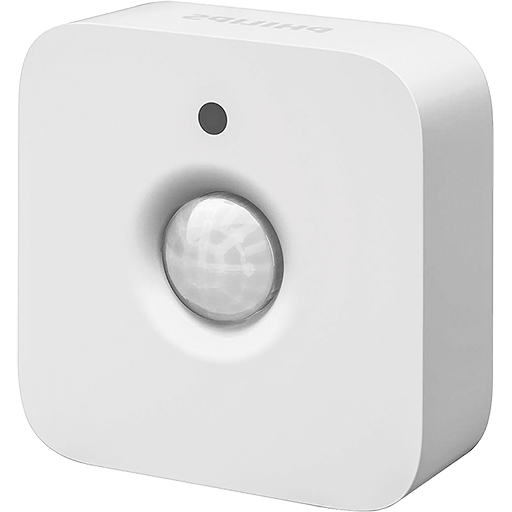
- Very thin
- Long detection range
- Illuminance sensor
- Common batteries (AAA)
- Costly
The Philips Hue Motion Sensor is a top choice among smart home fans for its high-quality build and easy integration into Homey setups. It runs on AAA batteries that last at least two years, and you can install it anywhere with the included screws or magnetic stand.
Philips describes the Hue sensor’s detection range as “optimal at 5 meters,” but many users report it performs perfectly fine at distances of up to 9 meters, which is also in line with our tests. Equipped with an illuminance sensor, it’s ideal for triggering light-level conditioned Flows in Homey.
The Hue Motion Sensor resembles the Eve Motion Sensor in appearance but is more compact, measuring 55 x 55 millimeters. It is only 20 millimeters thick and stands out as the slimmest option in our Best Buy Guide.
As part of their Hue product line-up, Phillips also produces a very popular IP44-rated Outdoor Motion Sensor. This sensor works with the Hue Bridge to connect to your Homey Pro.
Shelly BLU Motion Sensor
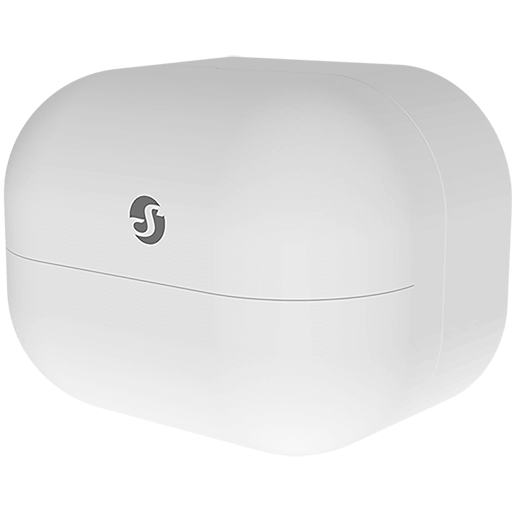
- Affordable
- Small and compact
- Long detection range
- Wide detection angle
- Great battery life
- Rare battery type
- Connectivity can be unreliable
Compared to others on our list, the Shelly BLU Motion Sensor is a budget pick at €19.90. However, it is a very capable motion sensor offering great value.
It can detect motion at a very wide angle of 120 degrees and a maximum distance of 9 meters, on par with much more expensive motion sensors. The Shelly BLU uses Bluetooth to connect to your Homey Pro, a direct connection that can span up to 10 meters indoors or 30 meters in open spaces.
The Shelly BLU is also the smallest motion sensor on our list, measuring 32 millimeters in height and 42 millimeters in width. When installed correctly, it is unnoticeable.
The main drawback of the Shelly BLU Motion Sensor is its use of a CR2477 button cell battery, which might be difficult to find when it needs replacing. However, this uncommon battery type enables the Shelly BLU to last up to five years, a tie with the Aqara P1 for the longest battery life on our list.
SwitchBot Motion Sensor
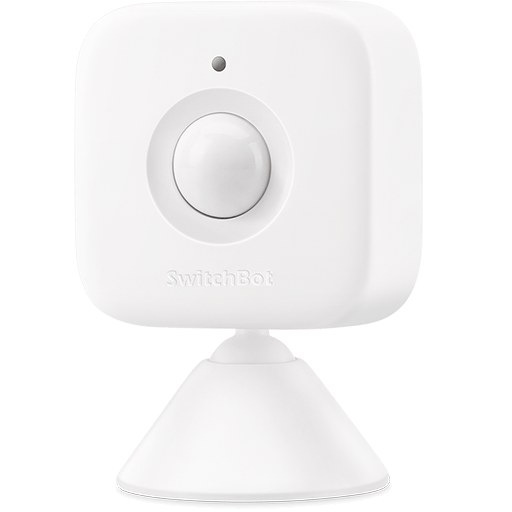
- Quality build
- Long detection range
- Wide detection angle
- Great battery life
- Rotating stand
- Pricier than comparable models
If you’re a fan of SwitchBot products, their Motion Sensor is worth considering for monitoring movement in your smart home. It has an attractive design and an elegant mounting stand, making it easy to set up on a shelf or mount on a flat surface like a wall.
The SwitchBot Motion Sensor’s compact size, especially without the stand, makes it one of the smallest motion sensors available. The front’s white and non-transparent lens gives it a modern and aesthetically pleasing look.
This motion sensor also measures illuminance with a dedicated light sensor installed above the lens, which you can use to set up day/night automation. It connects to your Homey Bridge or Homey Pro hubs over Bluetooth Low Energy, with a maximum range of 80 meters.
SwitchBot’s justified reputation for high-quality products is why their Motion Sensor carries a higher price tag than similar models.
ThirdReality Motion Sensor
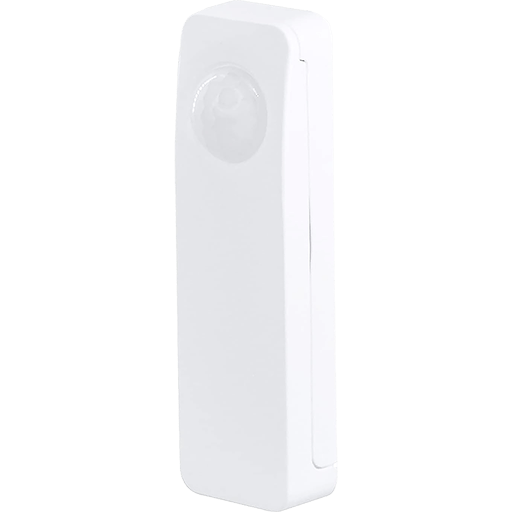
- Affordable
- Long detection range
- Wide detection angle
- Slender design
- Common batteries (AAA)
- No additional features
If you prefer adding Zigbee devices to your smart home, the ThirdReality motion sensor is highly functional and affordable. Its unique design stands out from others on our list, with a long and slender body measuring 9 centimeters in length and 2.7 centimeters in width. This sleek form factor makes it ideal for discreet installation on door frames, window frames, or the edges of bookshelves.
The ThirdReality Motion Sensor has no extra features like temperature or illuminance monitoring; however, it can detect motion of up to 9 meters at a wide angle of 120 degrees, which is great for covering most room sizes.
This motion sensor is a budget-friendly pick. It costs €20 per piece, or even lower if you buy it in bulk. Powered by standard AAA batteries, it lasts up to two years.
Zooz Q Sensor
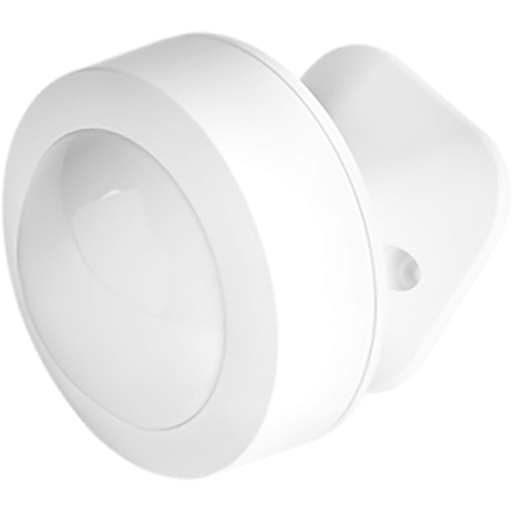
- Multi-sensor
- Can be wired
- Can use batteries
- Anti-tamper sensor
- Mediocre battery life
If you prefer using Z-Wave devices with Homey, consider the Zooz Q Sensor, labeled as model ZSE11. This device combines multiple sensors into one compact unit, offering motion detection, temperature, humidity, and light level monitoring. It’s powered by two CR123A batteries or a USB cable, providing flexibility in installation and use.
The Zooz Q Sensor has a motion detection range of up to 6 meters and a detection angle of 120 degrees, making it suitable for various spaces. Its compact design (58 x 58 x 56 millimeters) ensures it can be discreetly placed anywhere in your home.
Paired with Homey, the Zooz Q Sensor allows you to create Advanced Flows based on motion, light levels, temperature, and humidity readings. The device also has an anti-tamper sensor, which enhances security by alerting you if the device is moved or tampered with.
While the Zooz Q Sensor offers great flexibility with its power supply options, its extensive multi-sensor capabilities result in a relatively short battery life.
Final Thoughts
Motion sensors are essential for any modern smart home, whether you are looking to trigger simple lights or beef up security.
Hopefully, our list helps clarify your buying options for motion sensors, steering you toward a more specific and suitable choice. We meticulously chose each model featured in our guide for its standout qualities, including detection range, field of view, accuracy, price, and extra features like temperature and illuminance monitoring.
From the budget-friendly IKEA VALLHORN to the feature-packed Aeotec Multisensor 7, whether it’s Zigbee, Z-Wave, or Bluetooth, your Homey Bridge or Homey Pro is compatible with all of them.
